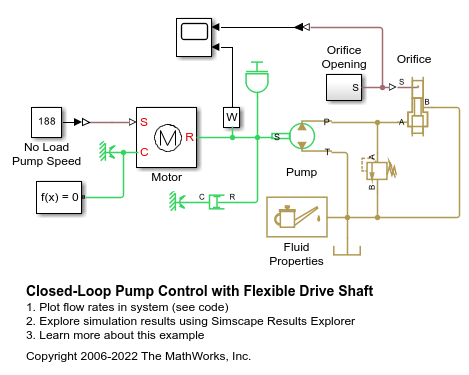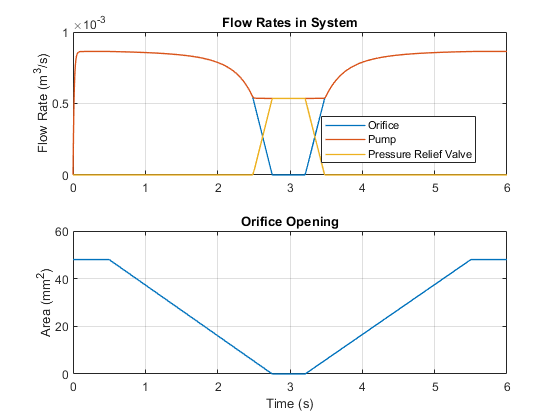Closed-Loop Pump Control with Flexible Drive Shaft
This example shows a typical power unit consisting of a fixed-displacement pump driven by a motor through a flexible transmission and a pressure-relief valve. A variable orifice serves as a load for the system.
The motor model uses an Ideal Angular Velocity Source block. The load on the shaft decreases the velocity with a slip coefficient of 1.2 (rad/s)/Nm, resulting in a no-load speed for the motor of 188 rad/s. The load on the pump drive shaft is measured with the torque sensor. The shaft between the motor and the pump is assumed to be compliant and is simulated with a rotational spring and damper.
The simulation starts with the variable orifice open, which results in a low output pressure and the maximum flow rate going to the system. The orifice starts closing at 0.5 seconds and is closed completely at about 2.75 seconds. The output pressure builds up until it reaches 75e5 Pa, and is maintained at this level by the pressure-relief valve. Just after 3.2 seconds, the valve starts opening and the system returns to its initial state.
Model

Motor Subsystem

Simulation Results from Simscape Logging
The plots below show how flow rates vary in the system as the orifice is closed. All of the fluid exiting the pump goes through the orifice at the start. As the orifice is closed, flow gradually ends up being diverted through the pressure relief valve. Flow resumes through the orifice as it reopens.

